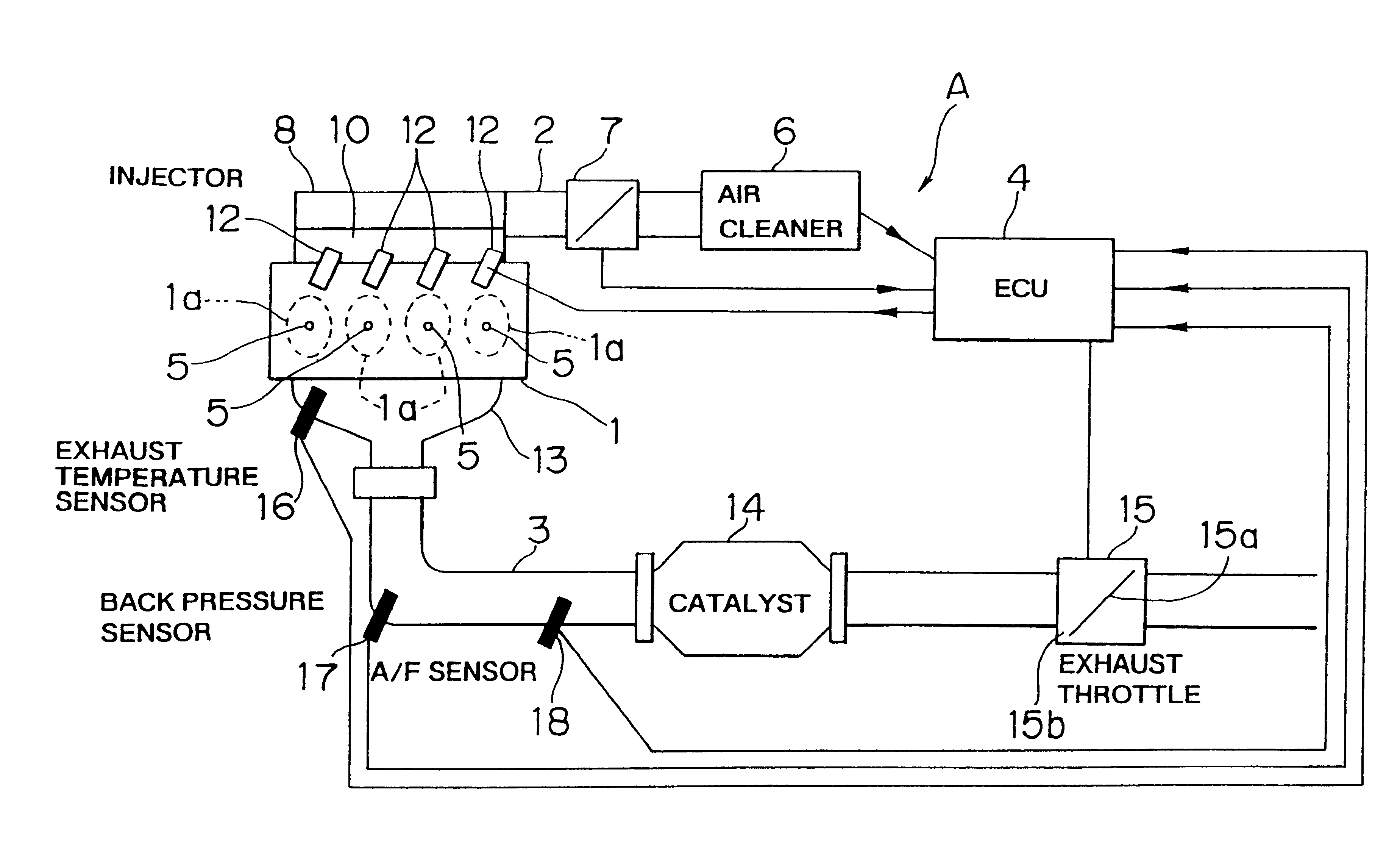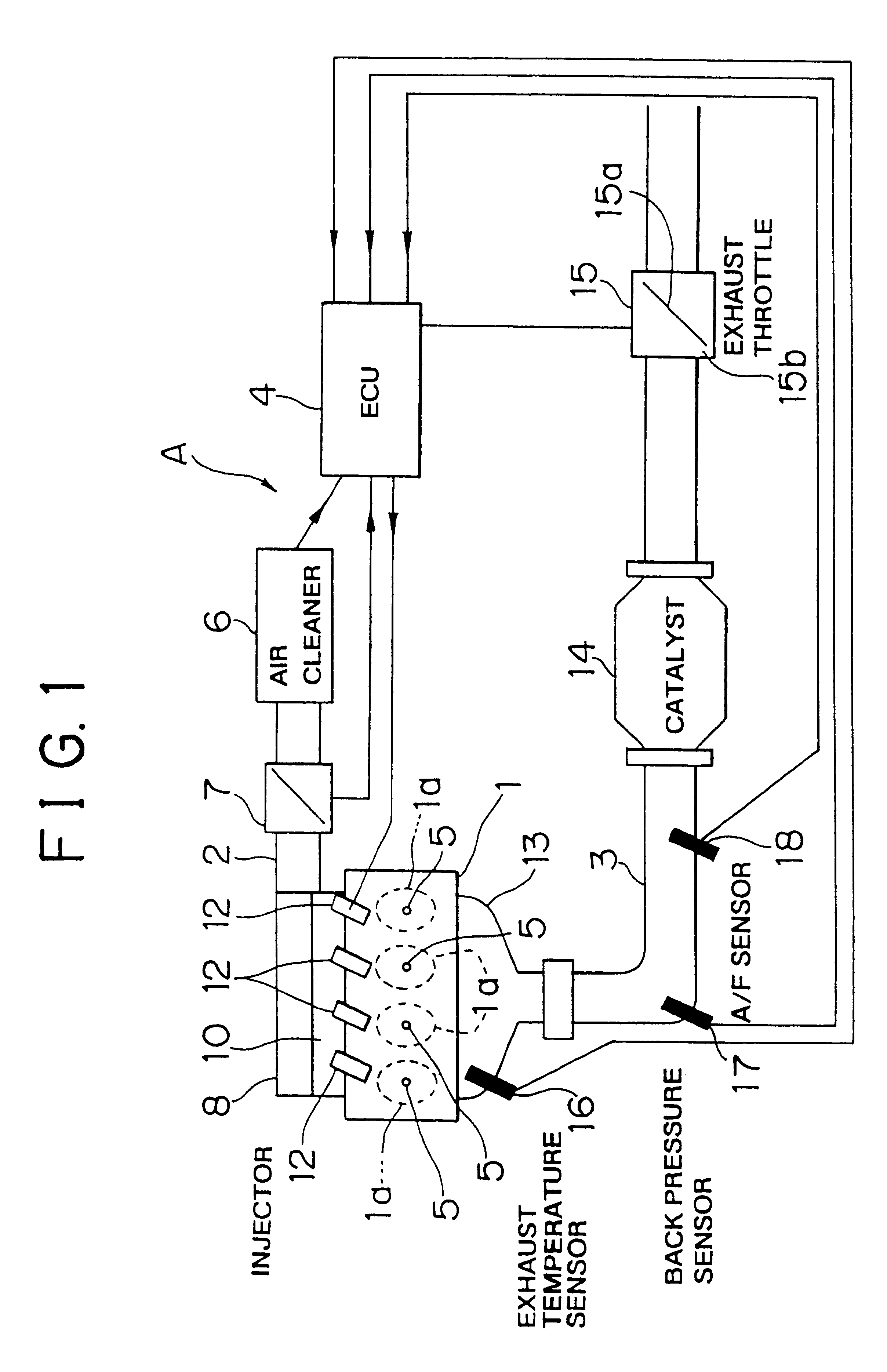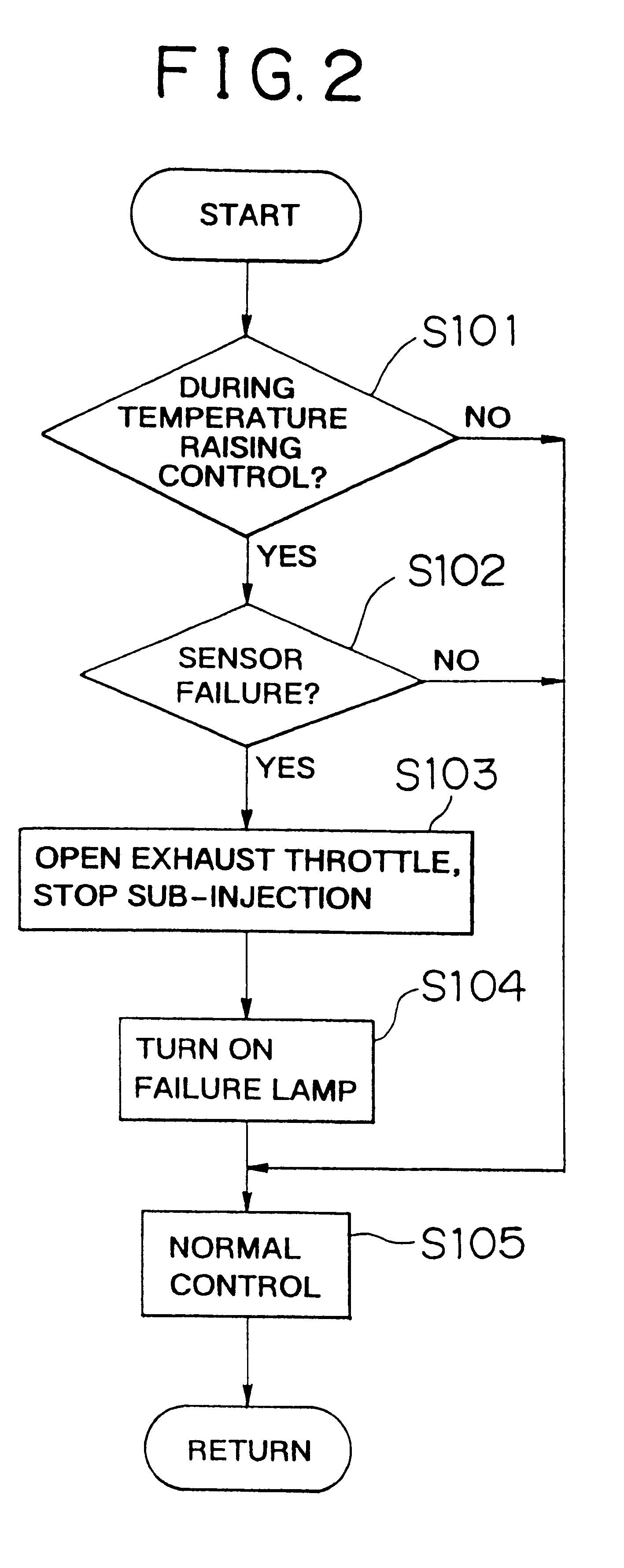Exhaust temperature raising apparatus and method for internal combustion engine
a technology of exhaust temperature and raising apparatus, which is applied in mechanical equipment, electric control, machines/engines, etc., can solve the problems of catalyst not being able to sufficiently control the emission of catalysts, unable to reduce unburned hcs, and large amounts of diesel engines
- Summary
- Abstract
- Description
- Claims
- Application Information
AI Technical Summary
Benefits of technology
Problems solved by technology
Method used
Image
Examples
first embodiment
the invention will be described with reference to FIGS. 1 and 2.
FIG. 1 is a schematic illustration of a lean-burn engine A (hereinafter, referred to as "engine A") that includes an internal combustion engine exhaust temperature raising apparatus according to the invention.
The engine A is a four-cylinder four-stroke engine having a cylinder block 1 in which four cylinders 1a are formed. Each cylinder 1a has a combustion chamber (not shown) to which an intake passage 2 and an exhaust passage 3 are connected in communication. The operation of the engine A is controlled by an ECU 4 that is an engine control unit.
The cylinder block 1 is provided with ignition plugs 5 corresponding to the individual cylinders 1a.
Each ignition plug 5 performs ignition based on an ignition signal distributed by a distributor (not shown).
The distributor distributes a high voltage outputted from an igniter to each ignition plug 5 synchronously with the crank angle of the engine A. The distributor and the igni...
second embodiment
The second embodiment differs from the first embodiment as follows.
In the first embodiment, the operation of the exhaust gas temperature increase means is stopped when a failure occurs in a sensor that is an exhaust gas temperature increase monitor means. In the second embodiment, when a value provided by an exhaust air temperature sensor or a back pressure sensor that indicates a temperature of exhaust gas is different from a predetermined value, it is simply determined that the exhaust temperature raising apparatus has an abnormality, aside from the determination as to which part of the exhaust temperature raising apparatus has an abnormality, and the operation of the exhaust gas temperature increase means is stopped.
Therefore, the content of a program for stopping the operation of the exhaust gas temperature increase stop means and portions related to the content of the program will be specifically described. Portions of the second embodiment substantially the same as those of th...
PUM
 Login to View More
Login to View More Abstract
Description
Claims
Application Information
 Login to View More
Login to View More - R&D
- Intellectual Property
- Life Sciences
- Materials
- Tech Scout
- Unparalleled Data Quality
- Higher Quality Content
- 60% Fewer Hallucinations
Browse by: Latest US Patents, China's latest patents, Technical Efficacy Thesaurus, Application Domain, Technology Topic, Popular Technical Reports.
© 2025 PatSnap. All rights reserved.Legal|Privacy policy|Modern Slavery Act Transparency Statement|Sitemap|About US| Contact US: help@patsnap.com



